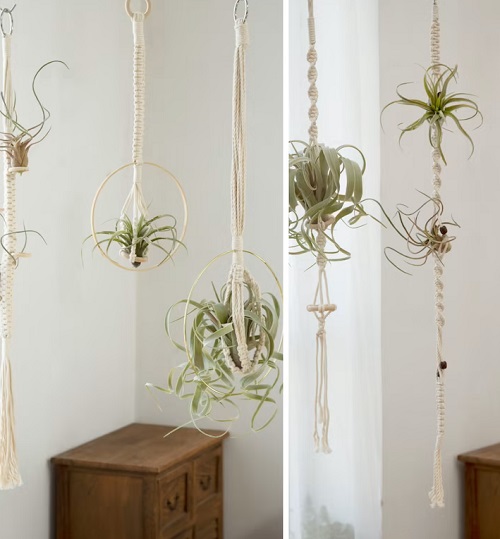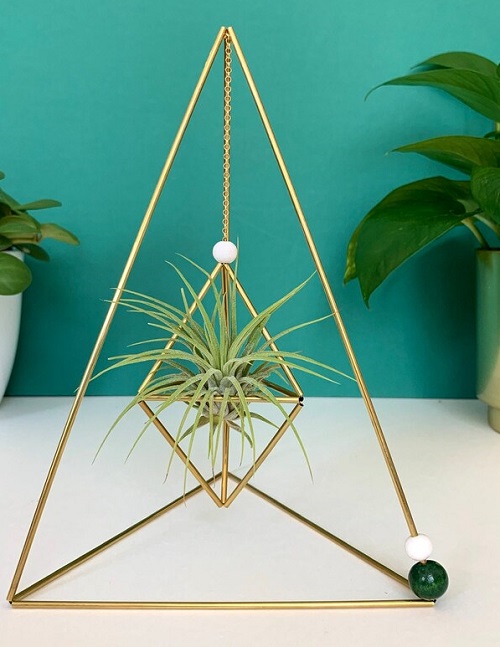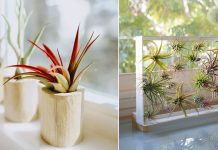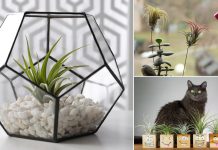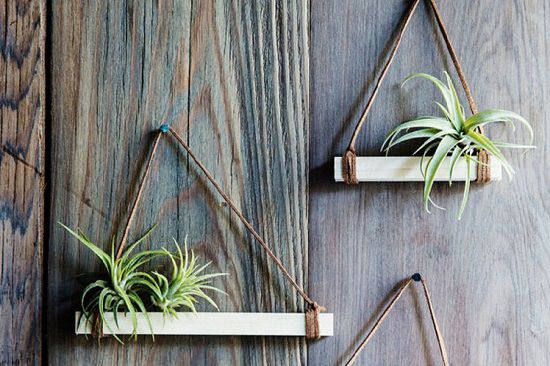Find out How Long Do Air Plants Live in this detailed guide.You can also learn tips to extend the life of this beautiful plant in this post.
Air plants, also known as Tillandsia, are captivating and low-maintenance plants, but have you ever wondered about their lifespan? The life expectancy of these unique plants can vary from a few short years to several decades. In this guide, you will delve into the factors that influence How Long Do Air Plants Live.
How Long Do Air Plants Live?
Scientifically known as Tillandsia, air plants are unique and fascinating plants belonging to the Bromeliad family. They are called “air plants” because they do not require soil to grow; they obtain nutrients and moisture from the air. The lifespan of air plants can vary depending on several factors, including their species, care, and environmental conditions. Here’s an elaboration on how long air plants can live:
1. Species Variability
Different species of air plants have varying lifespans. Some air plants are short-lived, while others can live for many years. For example, Tillandsia ionantha, a common species, typically lives for 2-3 years, while Tillandsia usneoides (Spanish moss) can live for decades or even centuries.
2. Life Stages
Air plants go through different life stages, including germination, growth, flowering, and reproduction. The lifespan of an air plant is often measured from the time it reaches maturity and starts flowering. After flowering, the parent plant will gradually decline, but it usually produces offsets or “pups” before it dies. These pups can be separated and grown into new plants, effectively extending the life cycle of the species.
3. Care and Maintenance
Proper care and maintenance play a significant role in determining how long air plants will last. Here are some care tips that can influence their lifespan:
- Light: Air plants thrive in bright, indirect light. Too much direct sunlight or too little light can stress the plant and shorten its lifespan.
- Watering: Watering frequency and method are critical. Overwatering can lead to rot, while underwatering can cause dehydration. Soaking or misting the plants every 1-2 weeks is a common watering routine, but it may vary depending on the environment.
- Air Circulation: Good air circulation helps prevent fungal and bacterial issues that can affect air plants. Ensure they have adequate airflow by placing them in a well-ventilated area.
- Humidity: Air plants benefit from higher humidity levels, so misting them regularly can help extend their lifespan, especially in dry climates.
4. Environmental Conditions
The environment in which air plants are grown can also impact their longevity. Factors like temperature, humidity, and air quality can influence their overall health and lifespan. Maintaining a stable environment within their preferred temperature and humidity range is essential.
5. Reproduction
Air plants reproduce by producing offsets or pups, which can be separated and grown into new plants. This natural process ensures the continuity of the species and can extend the overall lifespan of air plants.
Some Interesting Facts About Air Plants

- Epiphytic Nature: Air plants are epiphytes, which means they grow on other surfaces such as trees, rocks, and even power lines. They do not rely on soil for nutrients and water, instead absorbing moisture and nutrients from the air through specialized trichomes (tiny hair-like structures) on their leaves.
- Wide Diversity: The Tillandsia genus encompasses over 650 species, and they are found primarily in the Americas, from the southern United States to South America. Each species exhibits unique characteristics, sizes, shapes, and colors.
- No Roots for Anchoring: Unlike most plants, air plants have roots that are primarily used for anchoring rather than absorbing nutrients. Their main source of nourishment is the trichomes on their leaves, which extract moisture and nutrients from rain, dew, and air particles.
- Blossoms and Inflorescence: Air plants produce colorful and often fragrant flowers. The shape and color of the blooms vary among species. The inflorescence (flowering structure) can be striking and may last for several weeks. Interestingly, some air plants only flower once in their lifetime.
- Survival Strategies: Air plants have evolved several strategies to survive in their often challenging environments. They can curl their leaves to reduce moisture loss during dry periods and absorb more water when it’s available. Some species can also change color to adapt to changing light conditions.
- Prolific Pups: Air plants reproduce by producing offsets or pups. These miniature versions of the parent plant grow at the base and can be easily separated and propagated. This reproduction method ensures the survival of the species.
- Versatile Display Options: Air plants make excellent decorative plants and can be displayed in various creative ways. They can be mounted on driftwood, placed in terrariums, hung in glass orbs, or attached to magnets for fridge decorations. Their adaptability allows for imaginative and visually appealing arrangements.
Read About Where Do Air Plants Come From here
How to Increase the Life of Air Plants?
You can apply a few growing techniques to enhance the life of your air plants.
1. Proper Lighting
- Place your air plants in bright, indirect light. They thrive in locations with filtered sunlight or artificial light, like near a window with sheer curtains.
- Avoid exposing them to direct sunlight for extended periods, as this can lead to sunburn and damage.
2. Watering Routine
- Water your air plants properly by soaking or misting them. The ideal frequency depends on your local climate and indoor conditions. In general, misting 2-3 times a week or soaking for 20-30 minutes every 1-2 weeks is a good starting point.
- Use room-temperature, chlorine-free water. Rainwater or distilled water is ideal.
- After watering, make sure to shake off excess water to prevent rot in the crevices of the plant.
Check Out How big Air Plants Get here
3. Air Circulation
- Air plants need good airflow to prevent fungal and bacterial issues. Ensure they are placed in a well-ventilated area.
- If your air plants are in a terrarium or enclosed space, open it regularly to allow fresh air in.
4. Humidity Control
- Maintain a moderate level of humidity around your air plants. They thrive in humidity levels of 50-60%.
- Mist your air plants regularly to increase humidity, especially in dry indoor environments.
5. Temperature
- Keep air plants within their preferred temperature range, which is typically between 50°F (10°C) and 90°F (32°C). Avoid extreme temperature fluctuations.
- Protect them from freezing temperatures, as prolonged exposure can be fatal.
6. Avoid Fertilizing Too Much
- Air plants are light feeders, and excessive fertilization can harm them. Use a diluted, balanced, water-soluble fertilizer (10-10-10) once a month during the growing season (spring to early fall).
7. Grooming and Maintenance
- Regularly inspect your air plants for signs of pests or disease. If you notice any issues, address them promptly.
- Trim dead or dried-out tips or leaves with clean scissors or pruning shears to encourage new growth.
8. Pup Propagation
- Air plants reproduce by producing offsets or pups as the parent plant begins to decline after flowering, separating, and transplanting these pups into new containers or areas to continue the lineage.
9. Choosing Suitable Containers
- When displaying air plants in containers (e.g., terrariums or decorative holders), make sure they allow for proper air circulation and drainage to prevent excess moisture buildup.
Periodic Rest
- While air plants are resilient, they can benefit from a brief period of rest. Every few months, reduce watering frequency for a couple of weeks to mimic the dry season in their natural habitat.
Read Everything About Air Plant Diseases here

